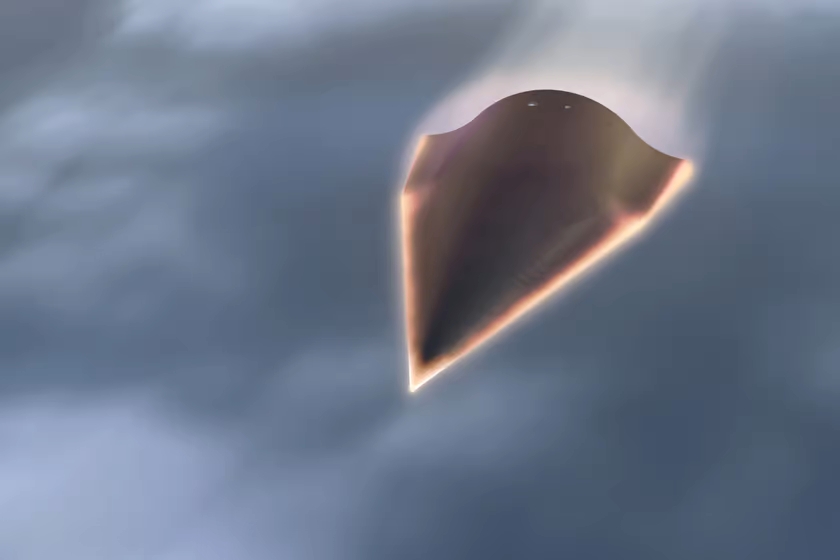
On Thursday, DARPA’s unmanned Falcon Hypersonic Technology Vehicle-2 (HTV-2) was launched from Vandenberg Air Force Base in California aboard an Air Force Minotaur IV rocket, which inserted the aircraft into the desired trajectory. After separation from the rocket, the vehicle transitioned to Mach 20 (approximately 13,000 mph/21,000 km/h) aerodynamic flight but a little after nine minutes of monitored flight the signal from the vehicle was lost with initial indications that the second test flight has ended in the same way as the first – with a crash into the Pacific Ocean.
A technology demonstrator and data-gathering platform, the ultimate goal of the HTV-2 aircraft is the capability to fly anywhere in the world in under 60 minutes by gliding through the Earth’s atmosphere at incredibly high speeds, which cause the aircraft to experience temperatures in excess of 3,500°F (1,927°C). The aircraft’s maiden flight in April 2010 followed a similar story to the latest flight with the vehicle providing data for a period of nine minutes before its signal was lost. This caused the vehicle to engage its onboard safety system, which executed a “controlled descent” into the Pacific Ocean.
“We gained valuable data from the first flight, made some adjustments based on the findings of an engineering review board to improve this second flight, and now we’re ready to put all of that to the test,” said Dave Neyland, director of DARPA’s Tactical Technology Office, prior to the second test flight.
In the period between the two test flights, engineers adjusted the vehicle’s center of gravity, decreased the angle of attack flown, and made the decision to use an onboard reaction control system to augment the vehicle flaps in an attempt to maintain stability during flight operations. Sophisticated simulations and extensive wind tunnel tests were also carried out but the team admits these ground tests “have not yielded the necessary knowledge” for the vehicle to sustain hypersonic atmospheric flight.
“Here’s what we know,” said Air Force Maj. Chris Schulz, DARPA HTV-2 program manager and PhD in aerospace engineering. “We know how to boost the aircraft to near space. We know how to insert the aircraft into atmospheric hypersonic flight. We do not yet know how to achieve the desired control during the aerodynamic phase of flight. It’s vexing; I’m confident there is a solution. We have to find it.”







